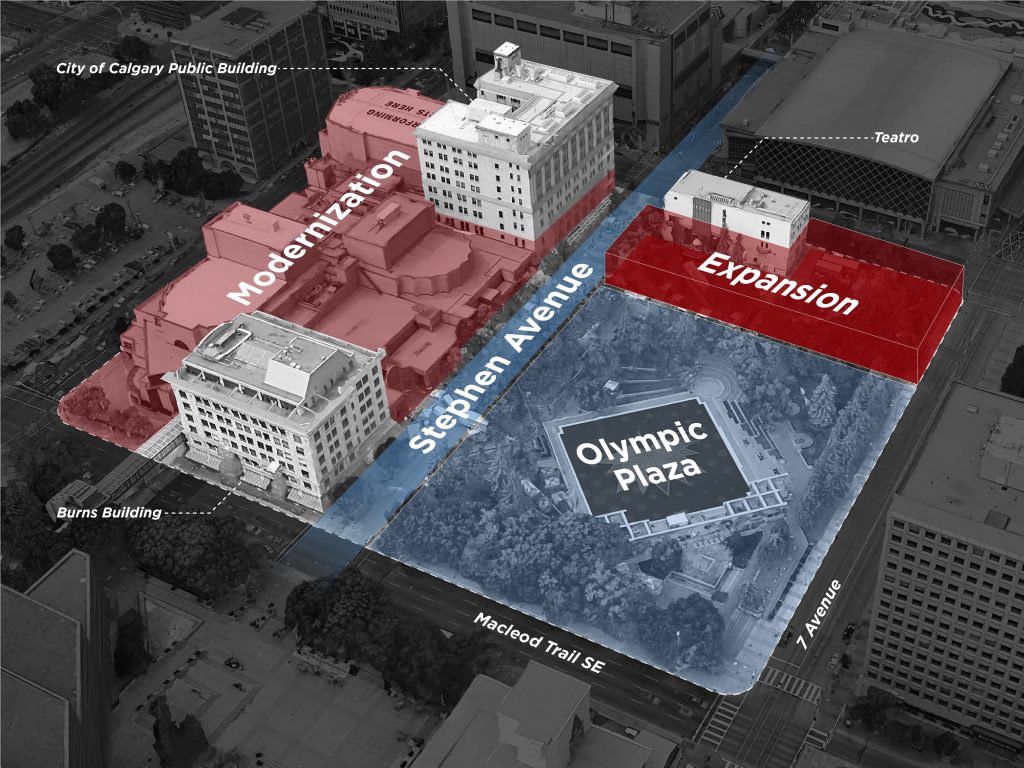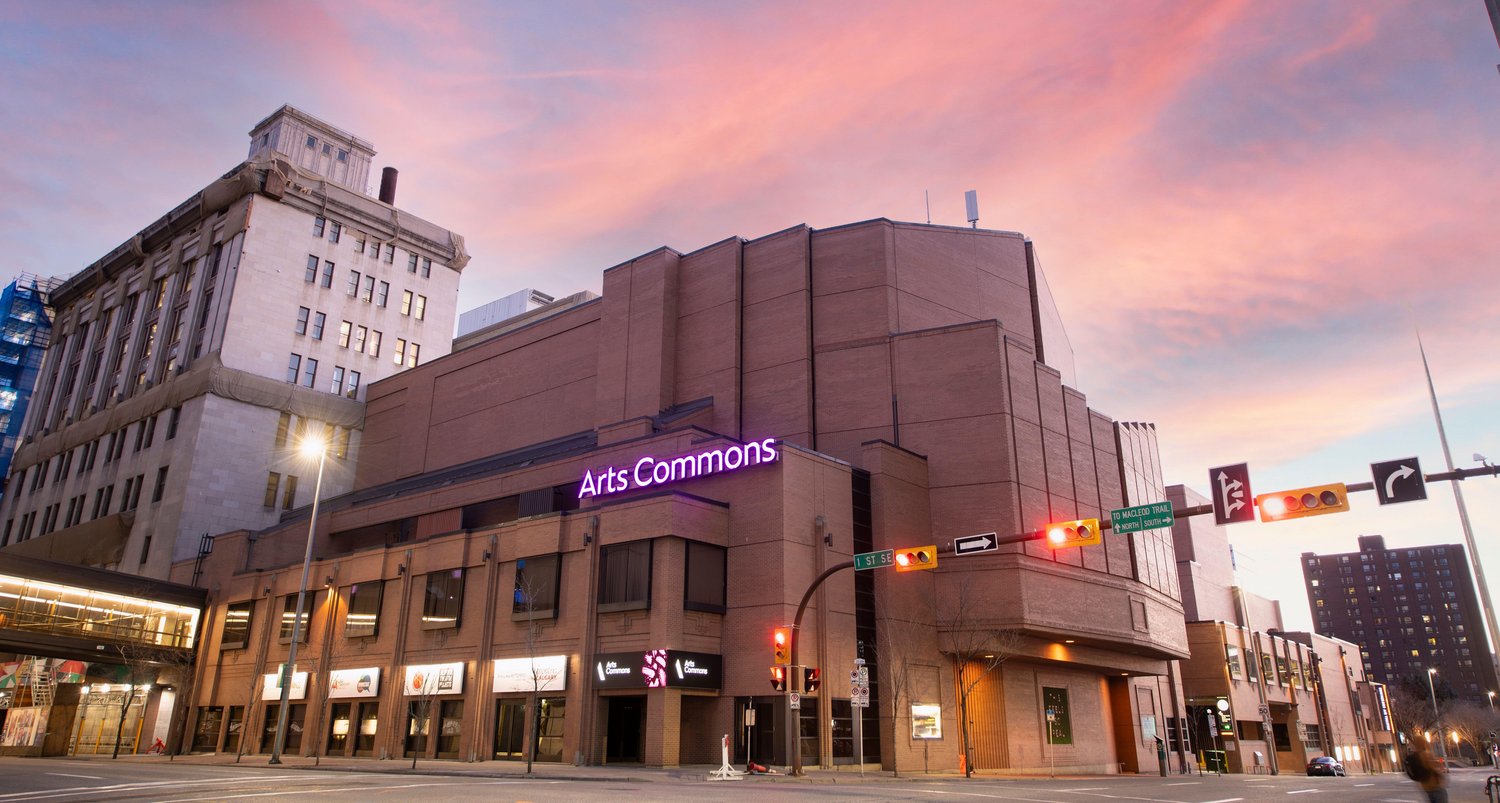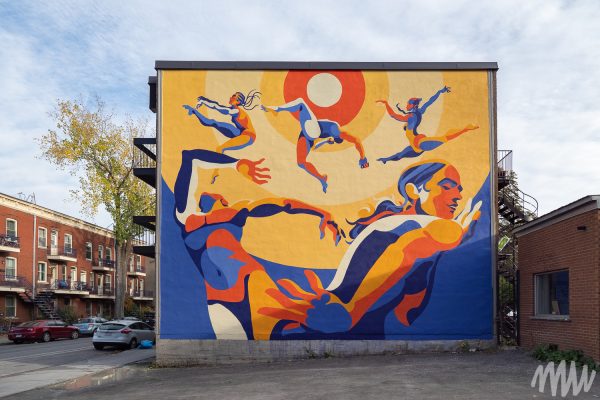This article is published through our Regional Reporter Program. We acknowledge the support of the Canada Council for the Arts through the Digital Now initiative.
The Arts Commons transformation project, in the heart of downtown Calgary, is currently the largest arts investment project in the country.
For over a decade, there have been multiple executives, board members and members of the City of Calgary who have pushed to expand and modernize Arts Commons, Calgary’s premier arts venue.
Arts Commons has been a cultural institution since 1985 and its transformation will roll out in two phases. The first phase will see a new build on an adjacent site across the street. This new building is anticipated to include a 1,000-seat theatre, as well as rehearsal and black box theatres. The plan is to include active retail and opportunities for arts education on the ground floor. The second phase will see a full renovation and modernization of the current space.

“It’s time for [Arts Commons] to move into the new generation,” said Kate Thompson, president and CEO of Calgary Municipal Land Corporation (CMLC).
“[The renovation] has required a lot of conversations with orders of government, convincing people that it’s a good business case. It’s a good model for Calgarians and it fills the need,” Thompson added.
The conversation started in 2008, with the assumption being it would be delivered by 2010. “It goes to show that due diligence takes a long time,” said Alex Sarian, president and CEO of Arts Commons.
All those conversations have led us to 2022, where the CMLC has engaged a design team and has a fully funded $240 million first phase.
“We would not have been able to get to $240 million [in public funding] had it not been for [the federal and provincial governments]. But we really wouldn’t have been able to do it had the city not redirected these funds at their discretion towards our project,” Sarian explained.
It’s time for [Arts Commons] to move into the new generation.
Kate Thompson
Arts Commons will be coming up with a fundraising campaign for the second phase. In total, the project is expected to cost $450 million.
The team is in the early stages of design and will work through detailed designs through 2023, breaking ground in 2024.
“I think one of the best parts of it is its location: right in central Calgary,” Thompson said about what she finds most exciting about this project. “After that, it’s how can we gather? And how do we gather in various scales? And various diverse groups? What does gathering look like for Calgarians? Answering those questions is the interesting part of this project.”
“What I find interesting about the situation we are in today… is that we’re taking [a] part of downtown [with a high vacancy rate as workforces slowly return post-pandemic] and we’re trying to reinvent it. We’re not doing it at the cost of pushing communities out,” Sarian said.
Sarian would like to see more dance in downtown Calgary and more dance within the Arts Commons facility. Of the six Arts Commons resident companies, four are theatre based, one is the Calgary Philharmonic Orchestra and the other is AC Presents, with a festival focus. While there is diversity of genre, there is less diversity of art forms in the building. He believes that is where the potential for growth programmatically exists. Arts Commons needs to create an environment for that growth that is also financially viable.
Sarian sees the new 1,000-seat theatre as filling a current gap in Arts Commons. The new venue will need to accommodate a wide variety of art forms, from theatre to dance to concerts. It also means the new theatre will have to have a sprung floor.
“Historically, not many art centres have designed around the concept of flexibility. Our new venue in our new facility is absolutely being designed with the idea that we should be able to accommodate a greater amount of art forms and even artists that are breaking down the barriers between art forms,” Sarian said.

“I think we owe it to Calgary and the dance community and dance audiences to diversify as we increase our square footage, as we diversify our business model, as we find new revenue-generating opportunities [which can then be reinvested into the arts community],” Sarian continued.
Rufi Oswaldo, artistic director of Dancers’ Studio West doesn’t see more infrastructure as a bad thing for the dance community. But he would want to see more support for dance artists on an ongoing basis.
Independent dance artists are doing almost everything on their own, Oswaldo explained. They create, promote and market their work while running the administration and applying for grants. They are, he thinks, spread very thin.
“We have theatre space. But how accessible is that going to be to the broader arts community who are struggling to make a buck?” Oswaldo said.
He hopes that a new theatre venue in Arts Commons will be financially accessible to more than just the bigger dance companies who can afford a large venue.
Dance may require a more intentional strategic investment compared to other art forms, as it can be expensive for artists to produce while also being difficult to generate a profit. Sarian would love to see Arts Commons play a role in developing dance in the downtown core.
“I hope that we can contribute to the dance community thriving, just as we have with the theatre community,” Sarian said.
Dance Media Group strengthens the dance sector through dialogue. Can you help us sustain national, accessible dance coverage? Your contribution supports writers, illustrators, photographers and dancers as they tell their own stories. Dance Media Group is a charitable non-profit organization publishing The Dance Current in print and online.

Tagged:






